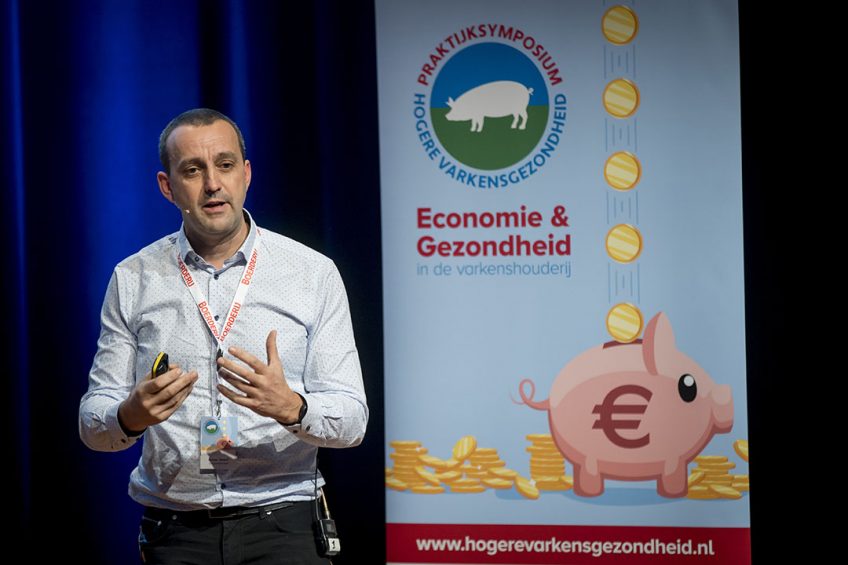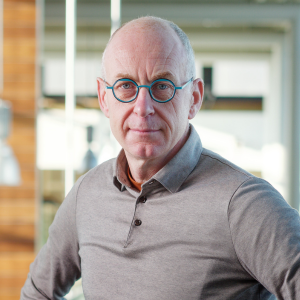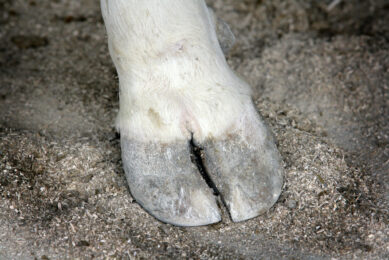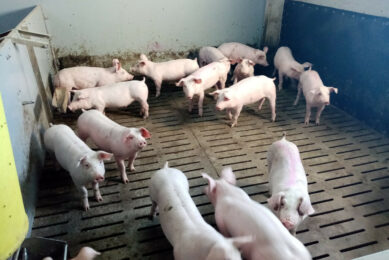Interview: “BioCheck makes biosecurity measurable”

Jeroen Dewulf, professor of veterinary epidemiology at Ghent University, Belgium, is known as a worldwide authority in the field of pathogen prevention. Measuring biosecurity is a challenge he addresses. He says, “The challenge of preventive health care has always been that, contrary to curative health care, one doesn’t see any tangible results.”
The Flemish professor Jeroen Dewulf is predominantly active in the field of preventive animal health. In that context the main idea is to prevent that animals get ill or that diseases will spread on farms or between farms. In other words: biosecurity. Not exactly a novel theme, but one that has been receiving more attention than ever before lately.
|
Why is biosecurity getting more attention?
- Because supplying antibiotics without giving it any further thought is a risky business.
- Swine production in large parts of the world is being jeopardised by African Swine Fever (ASF).
Biosecurity is an important tool to get a grip on antibiotics usage and to keep pig houses free from animal diseases. About the activities at Ghent University’s Faculty of Veterinary Medicine, Prof Dewulf says, “Contrary to veterinarians, we do not look at individual animals, but rather we consider things at farm or population levels. In the long term, we have to aim for a livestock industry in which antibiotics are barely needed, from birth until slaughter. Antibiotics have to be typically applied in curative use only.”
To offer tools to pig producers worldwide to produce healthier animals, Ghent University developed the so-called BioCheck method. This is a risk-based scoring system providing insight in biosecurity levels on farms and makes them measurable. Dewulf is also a co-author of the book Biosecurity in Animal Production and Veterinary Medicine.
Pig Progress: Biosecurity should be well known to everyone these days. Is the book still relevant?
Prof Jeroen Dewulf: “Oh yes, for sure. It isn’t exactly a book in the Harry Potter series, but there is a continuous demand for this book. Recently it was also translated into Chinese. It is the first book in which all components about biosecurity have been combined and address many issues at a detailed level, think of e.g. the correct cleaning and disinfecting of pig houses or the ideal working lines in a pig house. Many veterinarians are not completely aware of these type of issues either. They usually have a lot of knowledge in the field of diagnostics, curative veterinary medicine or vaccine usage, but not so much in the field of preventive animal health. It is well known that in livestock production a lot of mistakes are being made with regard to biosecurity. That mainly applies to African and Asian countries. There are, however, also major mistakes being made in Europe. So all in all, there is a long way to go before animals grow up healthily all around the globe without the structural usage of antibiotics. In some parts of the world, including the United States, antibiotics are still structurally included in feed as a growth promoter.”
Still, you speak of an animal husbandry without structural usage of antibiotics. Within which timeframe will that be possible, do you think?
“I think that this will be possible in the next 20 to 30 years. I have noticed that everywhere in the world there is a development going – or is at least being started up – towards a livestock industry aiming to use fewer antibiotics and even in the long term would like to get rid of group treatment. North West Europe in this respect is leading this development. In that part of the world there are already clusters of farms producing entirely without antibiotics usage. However, this also exists in the USA. In addition, from research it protrudes that the youngest generation of livestock producers has more knowledge of biosecurity than the older generations. That is necessary for achieving goals. Western Europe will remain leading in this respect, providing the livestock business retains its size.
But also in the rest of the world the understanding grows that growth promoters do not belong in animal feed. These countries will not escape taking out antibiotics from the feed. For the veal production industry, the challenge is particularly big. There young animals from hundreds of different mothers will meet each other in one farm house, which is a very challenging situation.”
Concepts like reduction of antibiotics usage as well as more prevention are being experienced as the umpteenth regulation heading towards the swine industry – only costing money.” – Prof Jeroen Dewulf.
How to start being a livestock producer that wants to produce healthy animals?
“A very important issue is to increase biosecurity levels. To achieve this, producers can use our free checklist. This is available online and can be applied for every, specific farm situation. Filling it out only costs one hour. It is advisable to do this together with the farm veterinarian or with other advisors. And it’s also wise not to try to apply all suggestions in one go, but to make a plan. Otherwise producers might run the risk of getting stuck in an overload of measures, with the additional risk of losing everything.”
Wouldn’t we then just be postponing seeing results?
“Not if producers would start with a small amount of measures that can make a big difference. Our scoring system will weigh the importance of every measure. It comes with a lot of algorithms. Measures that often have a big effect on a pig farm are water quality, keeping age groups together, the avoidance of overstocking in the pig house and a good purchasing and quarantine policy, to name a few. The challenge of preventive health care has always been that, contrary to curative health care, one doesn’t see any tangible results. If an animal is not sick, nothing will jump out. If in terms of health everything is running smoothly in a pig house, a pig producer will hardly pay attention.
“What is nice about our BioCheck is that this biosecurity can be measured and it will demonstrate progress. A farm will achieve a mark between 0 and 100, with 100 being the optimal situation. By making it measurable, users are being stimulated to emphasise prevention. Results one can compare to the development of technical performance. For pig producers, that is what counts.”
What is the effect on production?
“On average, the technical performance increases when the disease pressure comes down on a pig farm. It’s a fact that a small reduction of the Feed Conversion Ratio (FCR) or of mortality figures can have a substantial effect on the end result. Then we are talking about big money.”
Ghent University also zoomed in on the financial side of things. What results did you achieve there?
“True, we even looked into that twice. On average, farms will improve financially when biosecurity increases. We are not talking about spectacular amounts of money here. There are no miracle solutions in livestock production. In our research, predominantly in closed farms, we reach a benefit of € 43 per sow per year and € 2.70 per finisher pig place per year. Other studies show comparable numbers.
“In another study we conducted, the financial gain turned out to be lower, but still positive. We compared the costs of biosecurity measures to the effect of technical performance and potential reduction of medication costs; labour was also included in this calculation. What we saw is that medication costs will come down and production performance will increase.
“Costs for biosecurity will be relatively limited. Think about clothes, washing hands, the ideal working lines in a pig house and closing doors, sometimes permanently. It is, however, in the heads of many pig producers, as well as veterinarians, that biosecurity is not profitable. Concepts like reduction of antibiotics usage as well as more prevention are being experienced as the umpteenth regulation heading towards the swine industry – only costing money.”
Recently I read something that said: “Having healthy pigs is an art.” Would you agree with that?
“More likely I would agree to calling it a skill, otherwise it looks like it’s only for the happy few to keep his or her pigs healthy. What does really make a difference is stockmanship. The master’s eye is extremely important. Nevertheless, it is possible at every farm to improve biosecurity and produce healthier animals. On average it is true that the larger a farm, the better the biosecurity will be. In addition, at newer farms, biosecurity is usually easier to arrange. It is a problem as soon as one goes to extremes in production, by e.g. weaning the piglets at a very young age or by working with overstocked pens. There are limits as to what one can ask from animals.”
BioCheckThe BioCheck system has recently been revised and updated. Ever since February 20, 2020, the new version has been available to use online. |


 Profile
Profile









